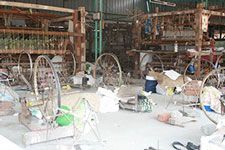Abstracts > Technoscience and science fiction: A world-making imaginaryThursday, the 6th of November 2025 - 10h45-11h30Marie-Clémence JALABER, PhD student, Laboratoire de recherche historique Rhône-Alpes (LARHRA) – UMR 5190, University Lumière Lyon 2. Human and social sciences discuss the concept of the imaginary in many forms, as based on thought, beliefs, and human psychology. Although it has quite recently come under critical review, it has nevertheless remained a pillar in the study of symbolism in human societies and cultures. These symbolic imaginaries were first developed by Godelier, Levi-Strauss, Lacan, Bachelard and Durand, and more recently they have been expanded to collective social imaginaries (Taylor, 2004; Castoriadis, 2006). As an anthropological object, the imaginary is particularly relevant for questioning our representations of the world. Technoscience’s narratives are an important new generator of symbolization whose founding pronouncements promote technocentric society as a natural, necessary, and unavoidable innovation that can benefit humanity and is driven by a desire for conquest. Yet, those technoscientific imaginaries, space exploration in particular, are the result of futuristic speculation portrayed in science fiction, to which the fans are now heirs. It is the romanticized 1960’s and 1970’s vision of outer space that Elon Musk, with his SpaceX, and Jeff Bezos, with the Blue Origin space tourism program, are spreading. If spatial imaginaries capitalize on people’s aspirations, reactions from the international public online (regarding the latest tourist mission of Blue Origin including various female celebrities such as singer Katy Perry and the enormous pollution it caused) have been particularly fierce. There are now conspiracy theories that seem to reject the instrumentalization of dreams for a science that is no longer a fiction for those who possess the financial means to do so.
|


